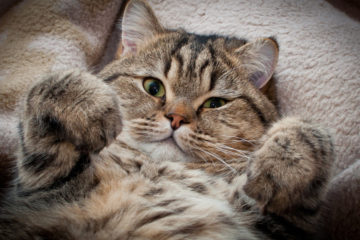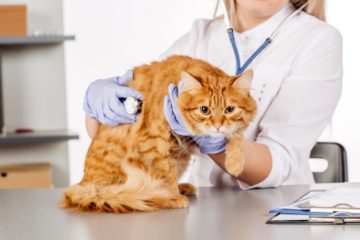Simply diabetes = diabetes mellitus is a chronic illness of metabolism in the cat organism induced by a lack (deficiency) of insulin or a resistance to insulin. Most commonly middle-aged cats are affected. Diabetes happens in all feline breeds identically and in both males and females. Diabetes mellitus can frequently evolve little by little, and the symptoms may not be marked at first.
Types of mellitus diabetes:
- Diabetes type 1. It results from autoimmune destruction of insulin-producing beta cells of the pancreas.
- Diabetes type 2. It is a metabolic illness that is marked by high blood glucose in the insulin resistance and comparative insulin deficit.

Symptoms
- Common signs include increased thirst and urination
- Increased appetite and weight loss.
- Diabetic cats generally evolve chronic or recurrent infections.
- An enlarged liver is common.
A number of mechanisms are liable for decreased insulin-making and secretion, but generally, they include the destruction of islet cells. In many cats with diabetes mellitus, a protein named amyloid compiles in and damages the islet cells.
Causes
- Fat enlargement the risk of insulin resistance in cats.
- The factor which contributes to insulin resistance includes endocrine illnesses.
- Genetic disposition.
A Diagnosis of diabetes in the cat is based on finding
- High levels of sugar in the blood after a period of fasting. In cats, the blood sugar level mostly enlargement under stress. To certify the diagnosis may be needed multiple assessments.
- High levels of sugar in the urine after a period of fasting.
Treatments
Your understanding of the disease and daily care of your pet are critical to successfully managing diabetes. Treatment involves:
- A combination of weight loss
- Diet
- Insulin Injections
- Possibly oral medications.

Commonly, cats are hospitalized for a couple days, and multiple blood samples are taken to measure the blood sugar level throughout the day. This info is used to define the number and timing of your pet’s feed, and the measuring and timing of insulin injections. After this primary equalization, your veterinarian will give confirm instructions on managing this regime at home. Periodic reassessment is needful to assure that the illness is being controlled; these estimate may lead to changes in therapy over time. It is generally preferable to have blood glucose testing executed at home to miss changes in the pet’s regimen.


